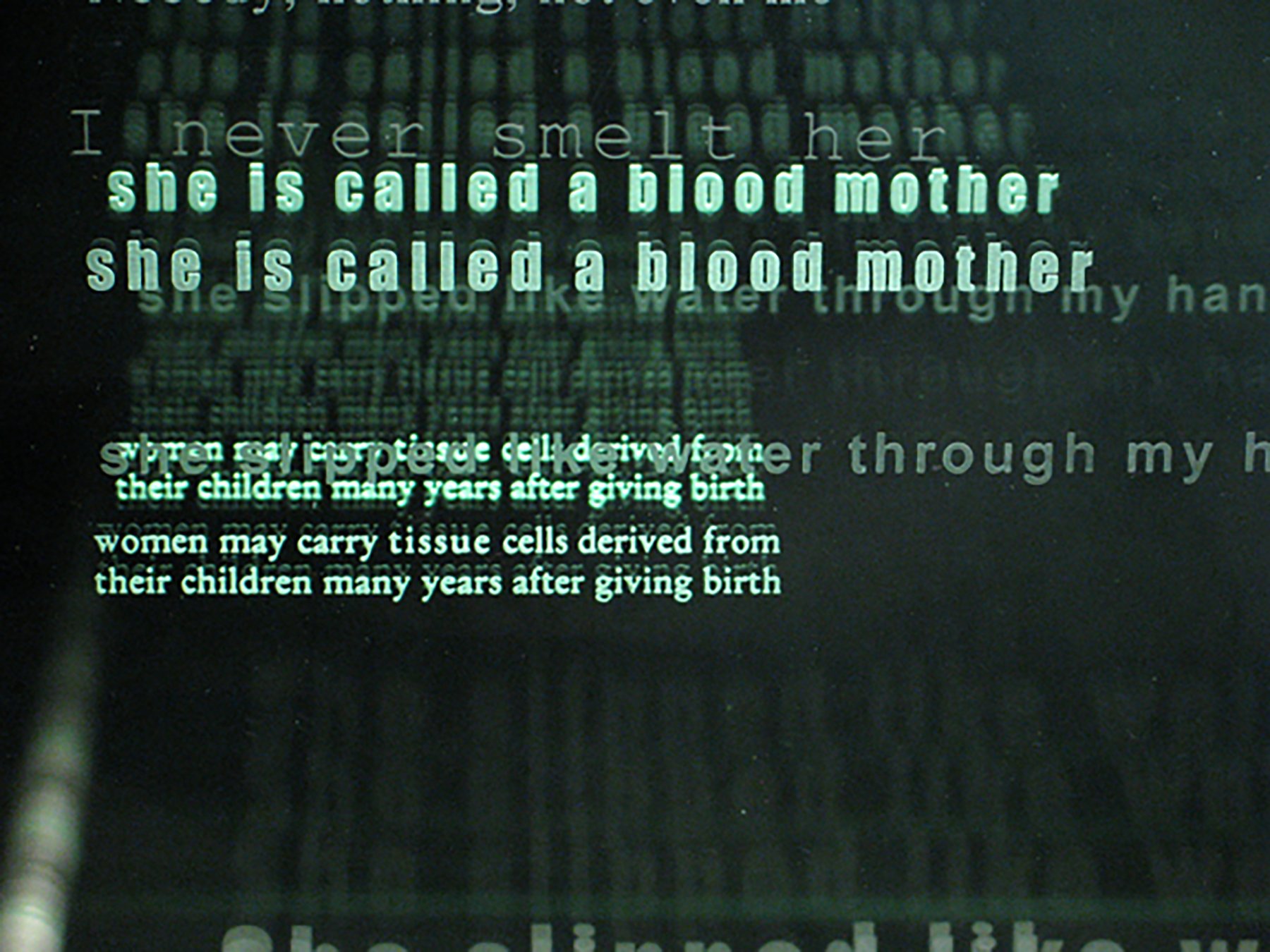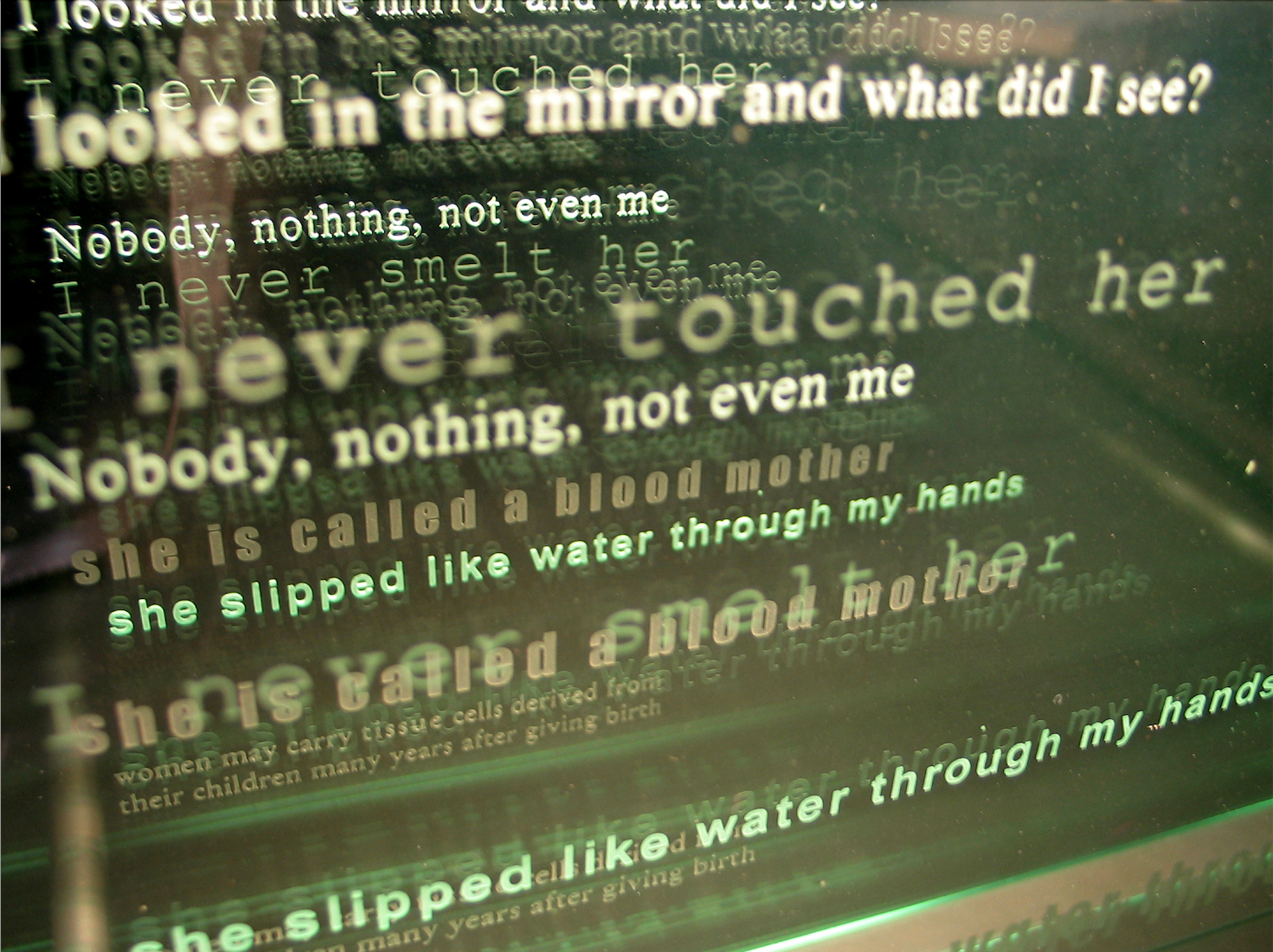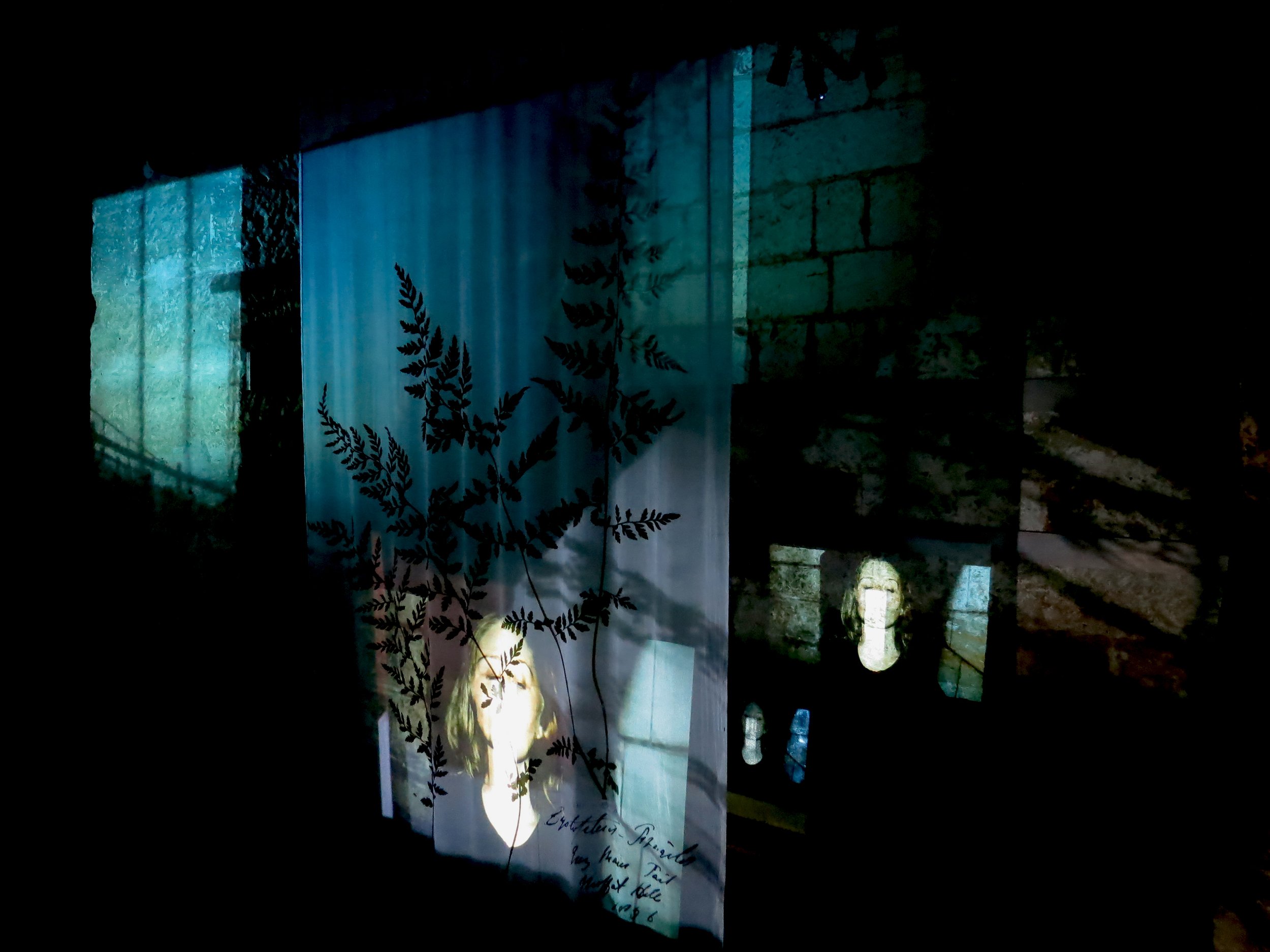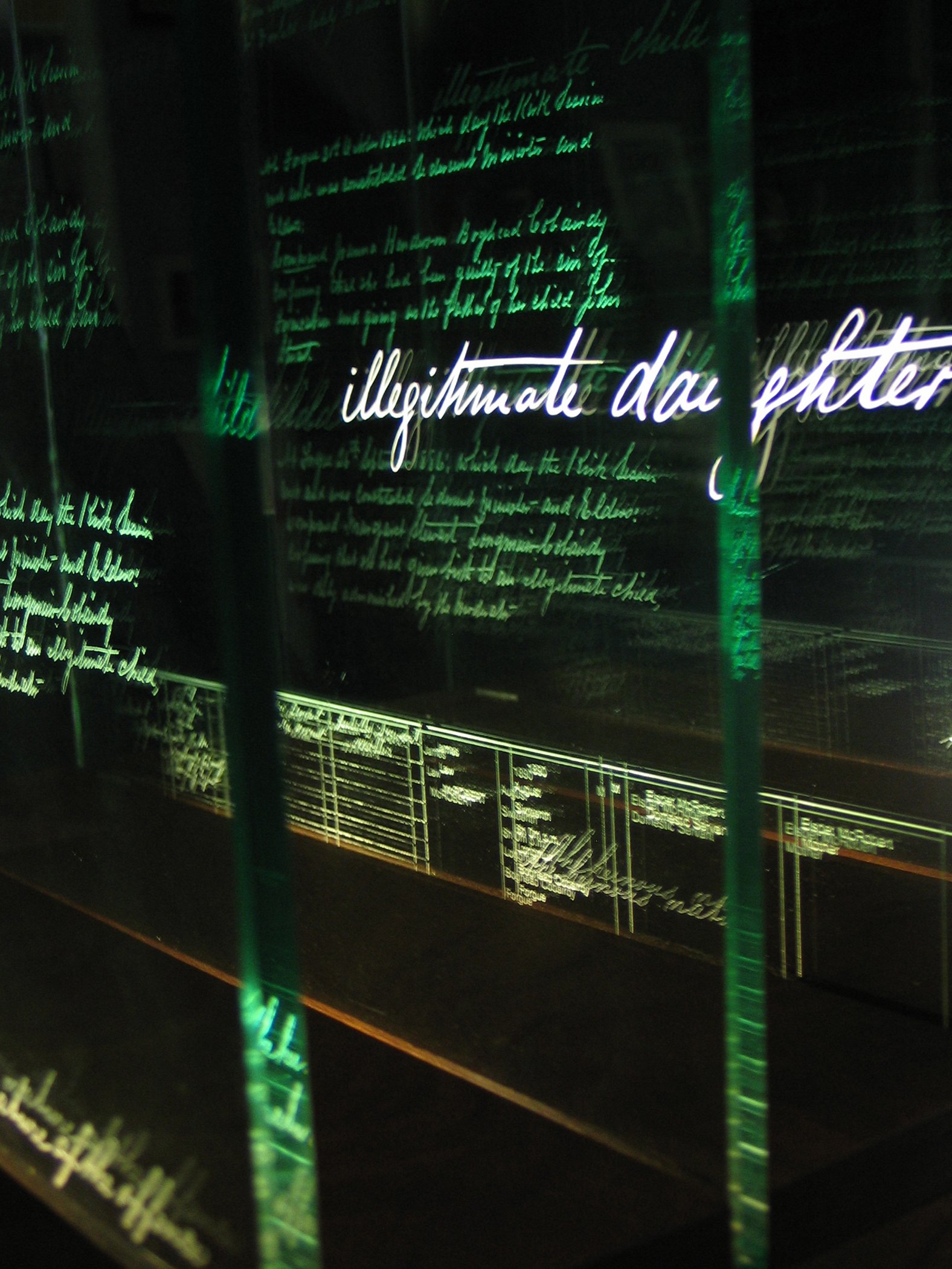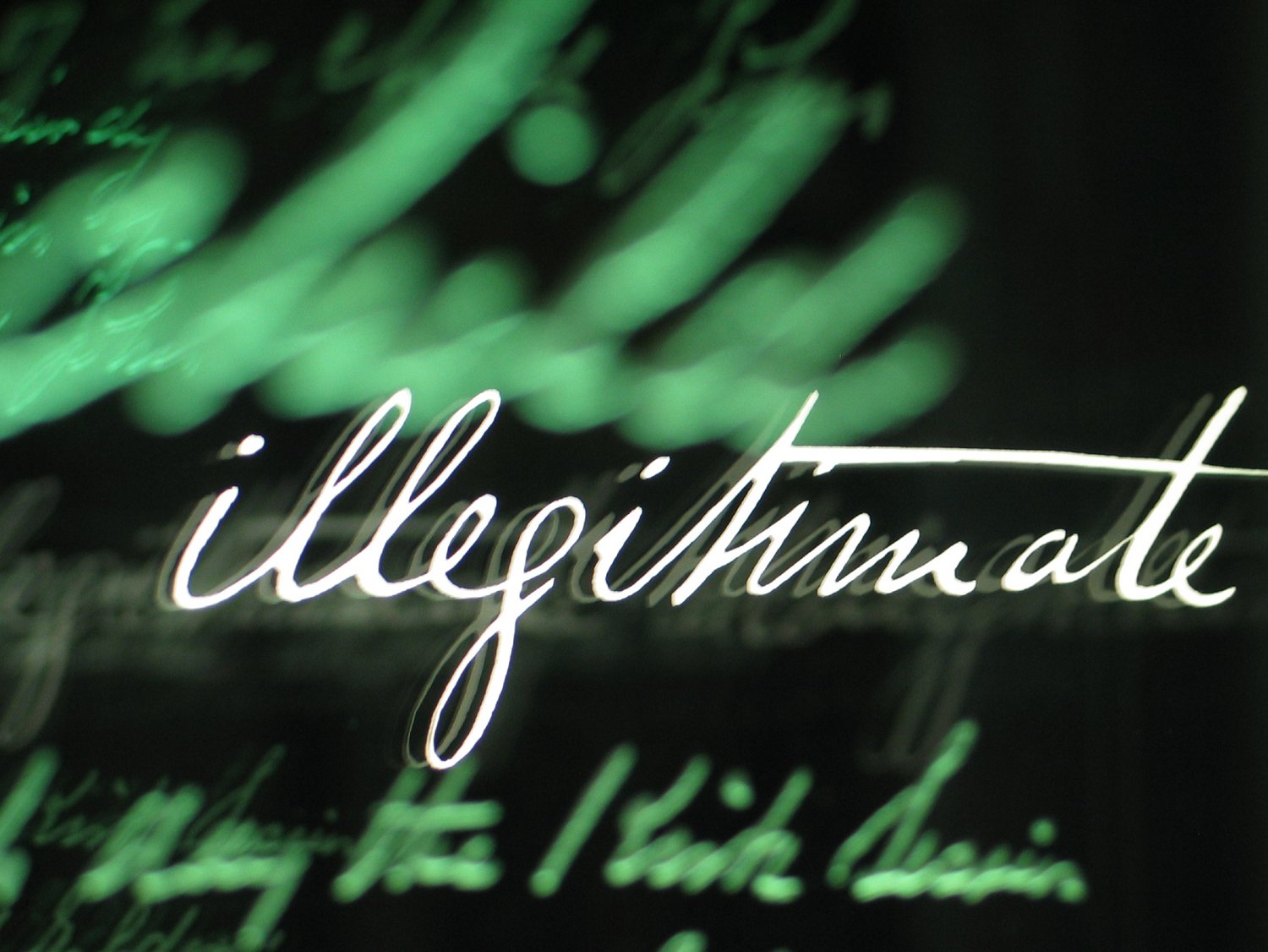ARCHIVE
CUSP, ABRI, THE CHALLENGE
The CUSP installation has 3-channels of video, projected through coated glass and reflected onto printed silk hangings. This record was made in the crypt of St Mary's in the Castle, Hastings. It is inspired by the intertwining lives of three women: Barbara Leigh Smith Bodichon, artist, feminist, and co-founder of Girton College Cambridge; Bessie Rayner Parkes, poet, feminist, and mother of Hilaire Belloc; and Lizzie Siddal artist and muse of Dante Gabriel Rossetti. They all lived or stayed in Hastings in the mid-1850s.
The installation relates to fragments of their lives. The format of asynchronous loops and reflections means that the stories are always slightly different on each viewing
Details:
6 Sept—6 Oct (UK) and 1 Nov—14 Dec 2013 (France) selected the UK artist for Ici et La, Cross border residency, Claremont Studios, and La Platforme Dunkerque. Exhibited in Coastal Currents Festival, Hastings, and Les Grands Magasins, Dunkerque as part of the 2013 regional Capital of Culture.
CUSP, 3-channel video, coated glass, printed silk
Abri, site-specific single-channel video, muslin voile
The Challenge, single-channel video.
Funded by Arts Council England and Conseil Régional Nord-Pas de Calais.
LANDSCAPES OF MEMORY
The videos below document the exhibition Land/sea-scapes at Duff House, National Gallery of Scotland, which included several installations: Hrimceald Sae (2006), Tri-Angulation (2004), Illegitimate Daughter (2002), Longmuir/Laighmuir (2009), The Looking Bowl (2001).
TRI-ANGULATION
Three shorelines, three journeys.
Based on texts found through archival research, Tri-Angulation was filmed on location in the following ports:
Southampton: Migrations to Canada after WW2, from interview with Dr. Mary Majka a ‘Displaced Person’.
Liverpool: Passage to India 19th century. The journal of Miss Ramsay, Scotland, possibly part of the ‘fishing fleet’, young women sent to support the Empire through marriage.
Aberdeen: Boy sailors. Sent to sea in the 19th century. Letters from shoeblack brigade boy, who has ‘lost all thoughts of home’ sailing back and forth along the Eastern coast of Britain on coalers.
AS THE CROW FLIES
As the Crow Flies was made in 2009 and filmed in India. Originally inspired by the journey of my birth ancestor who sailed as a boy sailor with the East India Company in 1858. It is inspired by the stories of boy sailors, British women who died in India at a young age through disease/childbirth, and Lakshmi Bai, Rani of Jhansi, killed during the Indian uprising/first war of independence in 1858.
THE OCEAN BETWEEN
The Ocean Between is an installation record of an exhibition, The Voyage Out: The Ocean Between at the Dock Museum Barrow in Furness in 2003. The Ocean Between reflects on the stories of child migrants to Canada in the 19th century. These girls were sent to Miss Rye's Home in Niagara on Lake Ontario, Canada. The film footage was shot on locations based on voyages to Canada undertaken by child migrants in the 19th century and Jini’s birth mother in the 1950s.
The installation comprises a single-channel video projected through panels of etched glass.
THE LOOKING BOWL
The Looking Bowl is part of the installation 'Kitchie Deems to NAAFI girls 100 years of Illegitimacy' shown in Art in Heaven Brighton Festival, 2003.
ILLIGITIMATE DAUGHTER
This text etched glass and mirror piece was made part of Kitchie Deems( Kitchen maids) to NAAFi girls 100 years of Illegitimacy, which was developed after my research into my birth family in Scotland. It is based on the Scottish kirk session records which relate to the birth of an illegitimate child in the cottage were my birth grandfather was also born (illegitimately) in 1891. I am interested in interrogating the power of language and fragmentation of meaning through multiple reflections and how context can also change its effect/affect. In addition to being shown galleries it was also shown in a Catholic Church in the Brighton Festival in 2003.
SHE SLIPPED LIKE WATER THROUGH MY HANDS
She Slipped Like Water Through My Hands was my first piece using text-etched glass and mirror. These were used in several later works. It reflects some of my original responses to the late discovery of my adoption. My birth mother had died before I found out. She is called a blood mother. It reflects both a sense of loss and the after-effects of dissociation. It includes small semi-poems
I never knew what she looked like,
I never heard her
I never touched her,
I never smelt her,
she slipped like water through my hands
I looked in the Mirror
And what did I see
Nobody, nothing,
Not even me
She Slipped Like Water Through My Hands was shown as part of the installation Screen Memories
